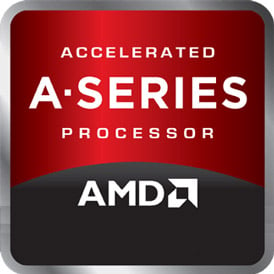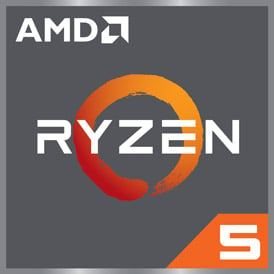 Cinebench R23 (Multi-Core)
Cinebench R23 (Multi-Core)
|
|
AMD Ryzen 5 4600G
6C 12T @ 3.7 GHz
|
9348
|
|
|
AMD A10-9700
4C 4T @ 3.5 GHz
|
1844
|
 Geekbench 5, 64bit (Multi-Core)
Geekbench 5, 64bit (Multi-Core)
|
|
AMD Ryzen 5 4600G
6C 12T @ 3.7 GHz
|
5877
|
|
|
AMD A10-9700
4C 4T @ 3.5 GHz
|
1745
|
 CPU-Z Benchmark 17 (Multi-Core)
CPU-Z Benchmark 17 (Multi-Core)
|
|
AMD Ryzen 5 4600G
6C 12T @ 3.7 GHz
|
4216
|
|
|
AMD A10-9700
4C 4T @ 3.5 GHz
|
762
|
 Cinebench R20 (Multi-Core)
Cinebench R20 (Multi-Core)
|
|
AMD Ryzen 5 4600G
6C 12T @ 3.7 GHz
|
3398
|
|
|
AMD A10-9700
4C 4T @ 3.5 GHz
|
716
|
 iGPU - FP32 Performance (Single-precision GFLOPS)
iGPU - FP32 Performance (Single-precision GFLOPS)
|
|
AMD Ryzen 5 4600G
6C 12T @ 3.7 GHz
|
1702
|
|
|
AMD A10-9700
4C 4T @ 3.5 GHz
|
787
|
 Cinebench R15 (Multi-Core)
Cinebench R15 (Multi-Core)
|
|
AMD Ryzen 5 4600G
6C 12T @ 3.7 GHz
|
1524
|
|
|
AMD A10-9700
4C 4T @ 3.5 GHz
|
303
|
 Cinebench R23 (Single-Core)
Cinebench R23 (Single-Core)
|
|
AMD Ryzen 5 4600G
6C 12T @ 3.7 GHz
|
1221
|
|
|
AMD A10-9700
4C 4T @ 3.5 GHz
|
596
|
 Geekbench 5, 64bit (Single-Core)
Geekbench 5, 64bit (Single-Core)
|
|
AMD Ryzen 5 4600G
6C 12T @ 3.7 GHz
|
1206
|
|
|
AMD A10-9700
4C 4T @ 3.5 GHz
|
556
|
 Cinebench R20 (Single-Core)
Cinebench R20 (Single-Core)
|
|
AMD Ryzen 5 4600G
6C 12T @ 3.7 GHz
|
472
|
|
|
AMD A10-9700
4C 4T @ 3.5 GHz
|
231
|
 Cinebench R15 (Single-Core)
Cinebench R15 (Single-Core)
|
|
AMD Ryzen 5 4600G
6C 12T @ 3.7 GHz
|
195
|
|
|
AMD A10-9700
4C 4T @ 3.5 GHz
|
92
|

